Analytics for Journalism¶
Andrew Montalenti, CTO

Online content ecosystem¶
Marginal cost of web content: zero.
- Print-era content: Monopolist one-way megaphones.Newspapers, TV, radio.
- Web-era content: Distributed n-way channels.Media websites, blogs, social networks.
- Content deluge: Commoditized the writer.Enthroned the editor.
- Editors vs Algorithms: Google News and Reddit.Prismatic and Flipboard.
What is online journalism?¶
Being redefined, but not without trouble.
- Legacy definition: “Content by professionals.”Is BuzzFeed journalism?
- Romantic definition: “Content in the public interest.”Is Wikipedia journalism?
- Market definition: “Content worth my money.”Is Hulu journalism?
My definition¶
A blend of these definitions:
- Content that informs, inspires, or outrages me.
- Content worth my time and money.
- Content worth my shares and links.

What makes journalism “good”?¶
“Good journalism” is that which, it would be beneficial to society that its content were widely dissemenated.
Snowden / Greenwald / Guardian is a recent example.
A whole lot of “bad journalism” subsidizes the good stuff.

Onward to the tech¶
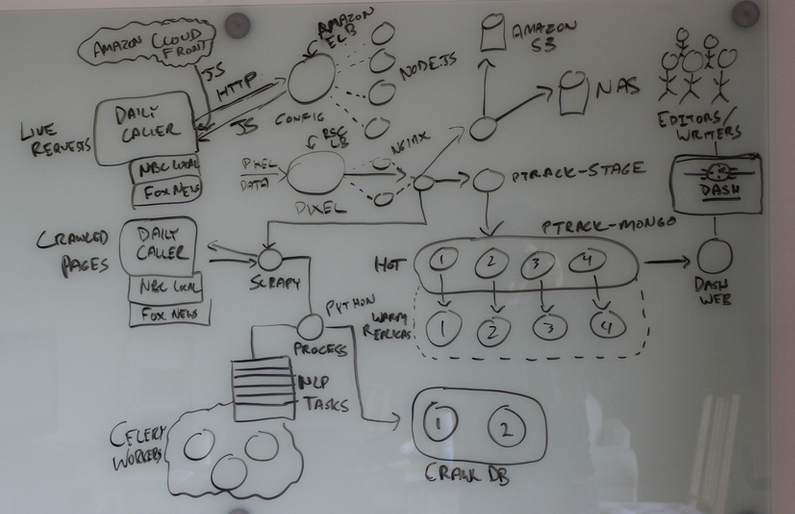
Why does journalism need analytics?¶
Websites have a variety of interesting “first-party” metrics:
- pageviews
- unique visitors
- sessions and paths
- time spent
- page engagement (scroll, copy/paste)
- referrers
- search keywords
E-commerce & ads drove web analytics industry.
Is online journalism special?¶
Yes.
- Short Shelf Life: average content shelf-life <48 hours
- High Frequency Publishing: 1000’s posts per day
- Unclear Conversion Goals: nothing to buy

Content metadata is rich¶
Field Description title Post or page title (article headline) link Canonical URL for post/page image_url URL for associated image type post, frontpage, sectionpage media_type article, slideshow, video pub_date Publication date section Section of the site (e.g. Politics) author Author who created the post tags List of editorially-provided tags topics List of machine-generated topics genres List of machine-generated genres
Third-party metrics emerging¶
- Comments: Disqus, LiveFyre, Wordpress
- Shares: Twitter, Google+, LinkedIn, Facebook
- Pins and Saves: Pinterest, Delicious
- Upvotes and Likes: Reddit, Digg
- Queues: Instapaper, Readability
Summary data¶
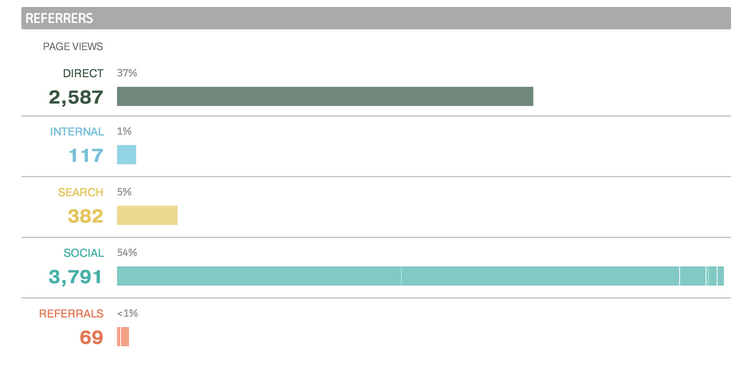
Benchmark data¶
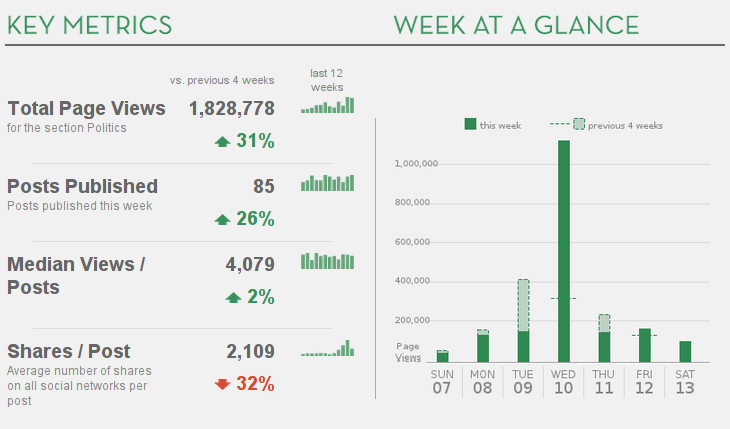
Information radiators¶
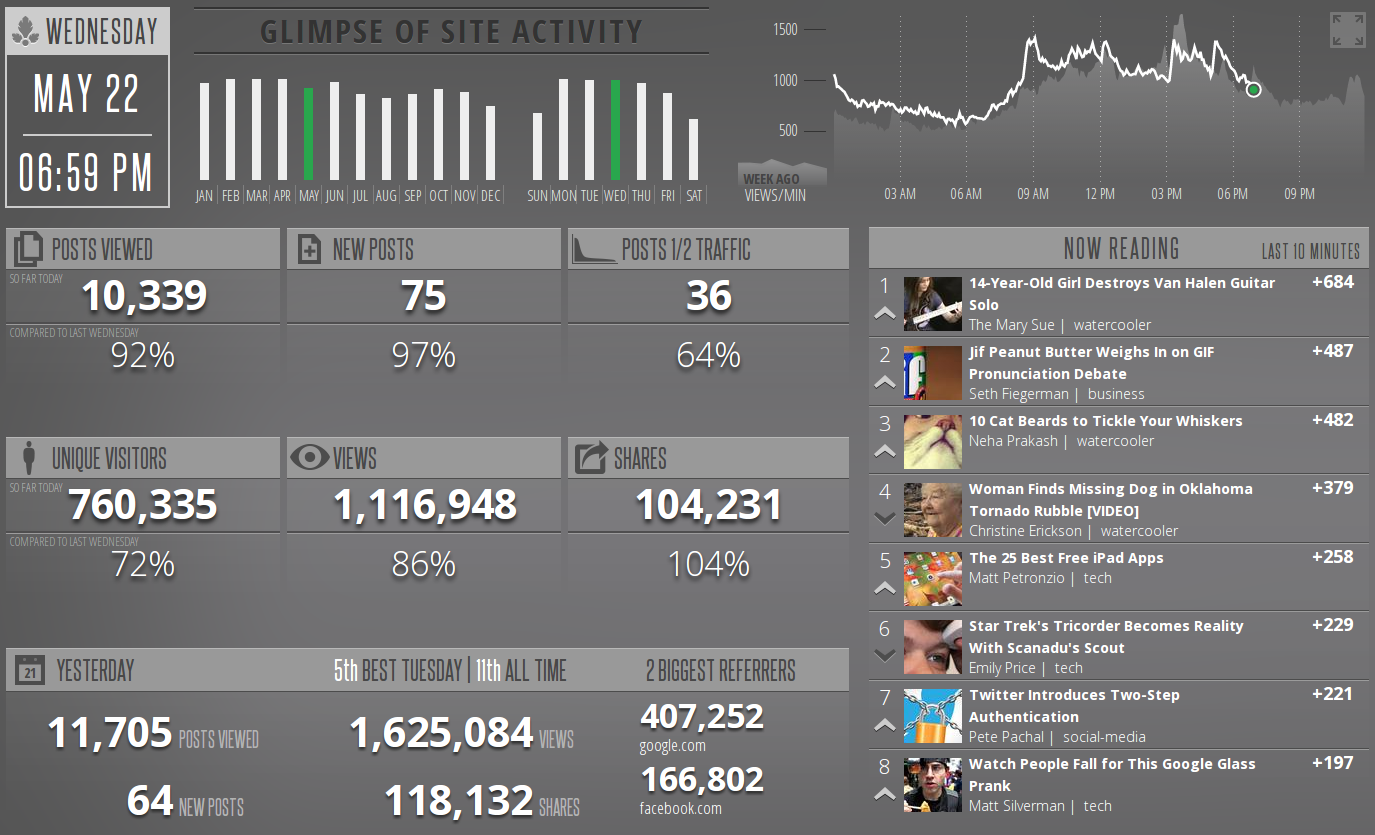
Demo time¶

Parse.ly tech stack¶
Parse.ly is a Python & Javascript shop.
(Some Java used begrudgingly and as necessary.)

Data centers¶
Servers running across:
- Amazon Web Services: data collection and archiving.
- Rackspace Cloud: data aggregation, web crawling, APIs.
- Himem Colo: live analysis, dashboard worker nodes.
Over 60 production nodes with approximately 1 terabyte of hot production RAM.
Scale¶
- 5 billion pageviews per month in May 2013
- Typical >2,500 requests per second daily peak
- Nearly 20 terabytes of raw compressed data
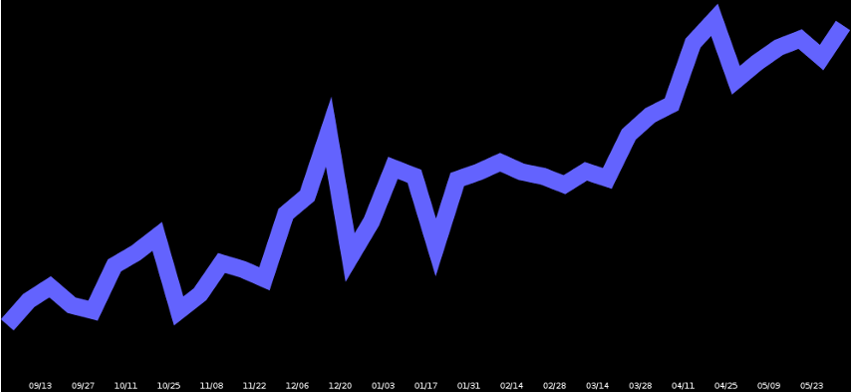
Stack Overview¶
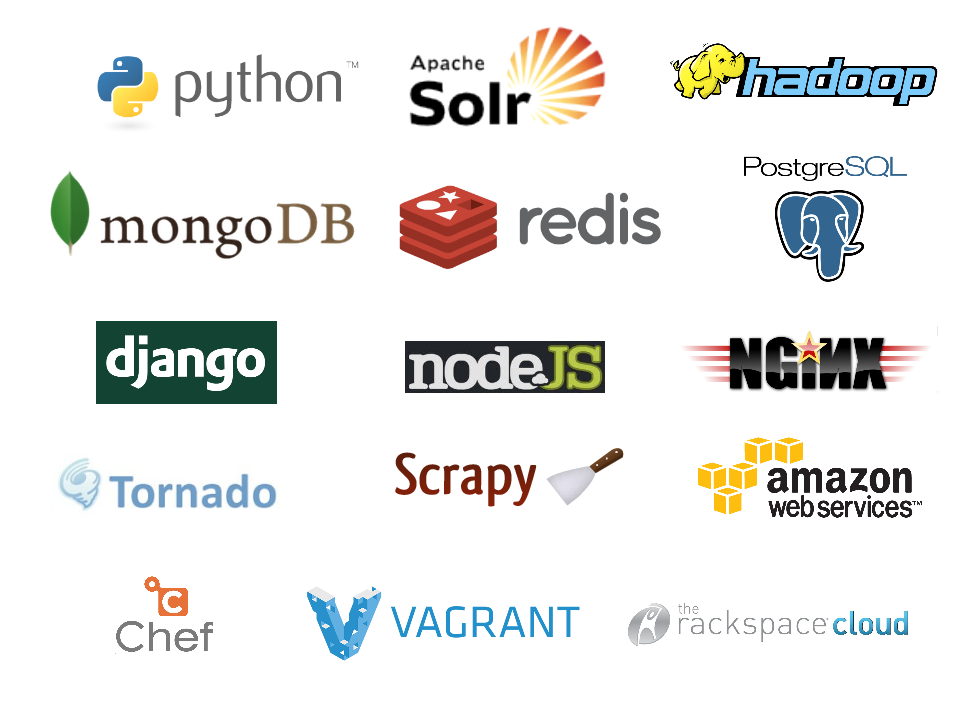
Backend Stack, v1 (2010-2011)¶
Tool Usage nginx data collection Amazon S3 raw logs for offline analysis MongoDB pre-aggregated data feedparser RSS/Atom feed parsing Celery distributed task queue
Backend Stack, v2 (2011-2012)¶
Tool Usage Cloud LBs* data collection without SPOF node.js* fast, dynamic Javascript config Amazon S3 raw logs for offline analysis MongoDB* sharded pre-aggregated data Redis* real-time data; past 24h, minutely Scrapy* maintainable web crawling Celery distributed task queue ZeroMQ* lightweight service communication Hadoop* compute-intensive offline analysis Solr* rich content indexing
Backend Stack, v3 (2012-2013)¶
Tool Usage Cloud LBs data collection without SPOF node.js fast, dynamic Javascript configuration Amazon S3 raw logs for offline analysis MongoDB sharded, replicated aggregate data Redis real-time data; past 24h, minutely Scrapy maintainable web crawling Storm* elastic distributed task queue Kafka* fast, reliable service communication hll* memory-stable estimated cardinality Pig* readable offline analysis scripts SolrCloud* scalable content indexing, trends
Frontend Stack, v1 (2010-2012)¶
Tool Usage Django web app framework jQuery Javascript utilities Protoviz.js data visualization framework
Frontend Stack, v2 (2012-2013)¶
Tool Usage Django web app framework jQuery Javascript utilities Bootstrap* responsive Javascript/CSS layouts Pandas* in-memory data manipulation LESS* modular CSS styling d3.js* customizable dataviz framework rq* asynchronous reporting Tornado* high-performance, REST/JSON API
Other important infrastructure¶
Tool Usage Graphite internal service statistics Munin system health and heartbeat metrics Sentry plant-wide exception catching logstash plant-wide logging Chef server configuration management vagrant local VM-based development Fabric scriptable SSH sessions
Things we learned¶
- Web data is messy.
- Aggregates over time series data is a hard problem.
- Must “become one” with your raw data.
- Server automation (via e.g. Chef) is crucial.
- Batch vs Stream path: an important pattern.
- High-memory cloud servers will change the game.
2013 areas of interest¶
- Text mining: Wikidata, content clustering.
- More social data: gevent-based API integrations.
- Hourly storage: MongoDB, schema redesigns.
- Content optimization: Solr, Function Queries.
- Visitor analysis: Cassandra, wide-row storage.
- Network trends: more work with Pig.
Crazy data ideas¶
- Solr for time series data?
- Storm-DRPC for live aggregates?
- Cassandra > MongoDB + Redis?
- Real-time Map/Reduce?
Where are we going with this?¶
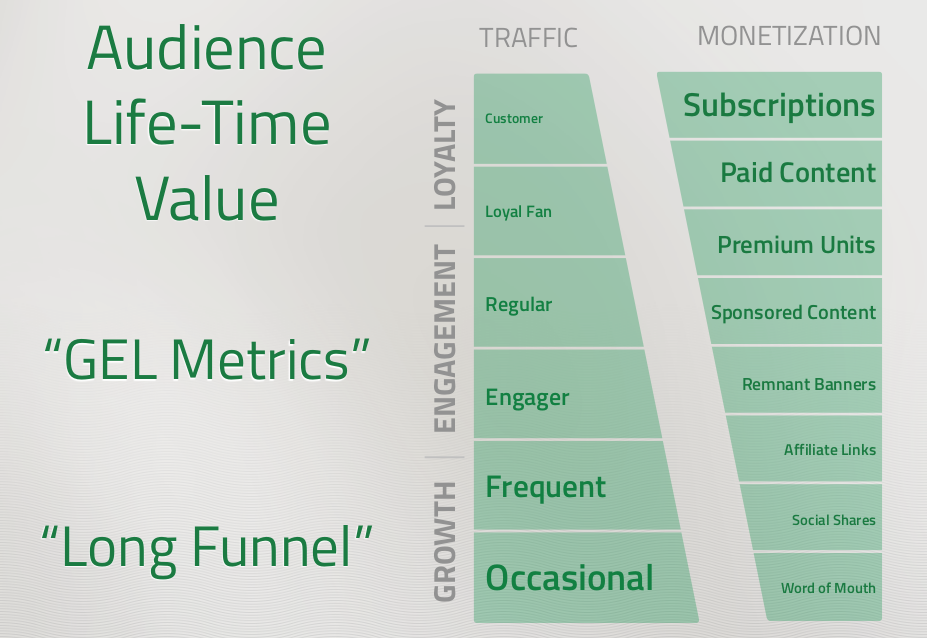
Growth¶
- New Monthly Visitors
- New Linking Domains
- New Shares
Engagement¶
- Avg Time Spent
- Avg Posts per Visit
- Comments Per Post
- Shares Per Post
Loyalty¶
- Monthly Repeat Visitors
- Monthly Homepage Visitors
- Visits Per Month
- Percent with Multiple Daily Visits
Using GEL for visitor targeting¶
Segment Target with... Growth Ads, e-mail newsletters, follows Engagement Premium ads, sponsored content Loyalty Subscriptions, ebooks, paid content
Using GEL for content strategy¶
Maturity Invest in... Growth Short-form, shareable, unique Engagement Medium-form, emotional, convenient Loyalty Long-form, insightful, indispensible
API Engagement Tools¶

API Loyalty Tools¶

Conclusion¶

- Parse.ly aims to become the definitive analytics system for online journalism and content.
- “Big Data”: it actually applies here.
- “Big Payoff”: help journalism thrive in the digital age.





